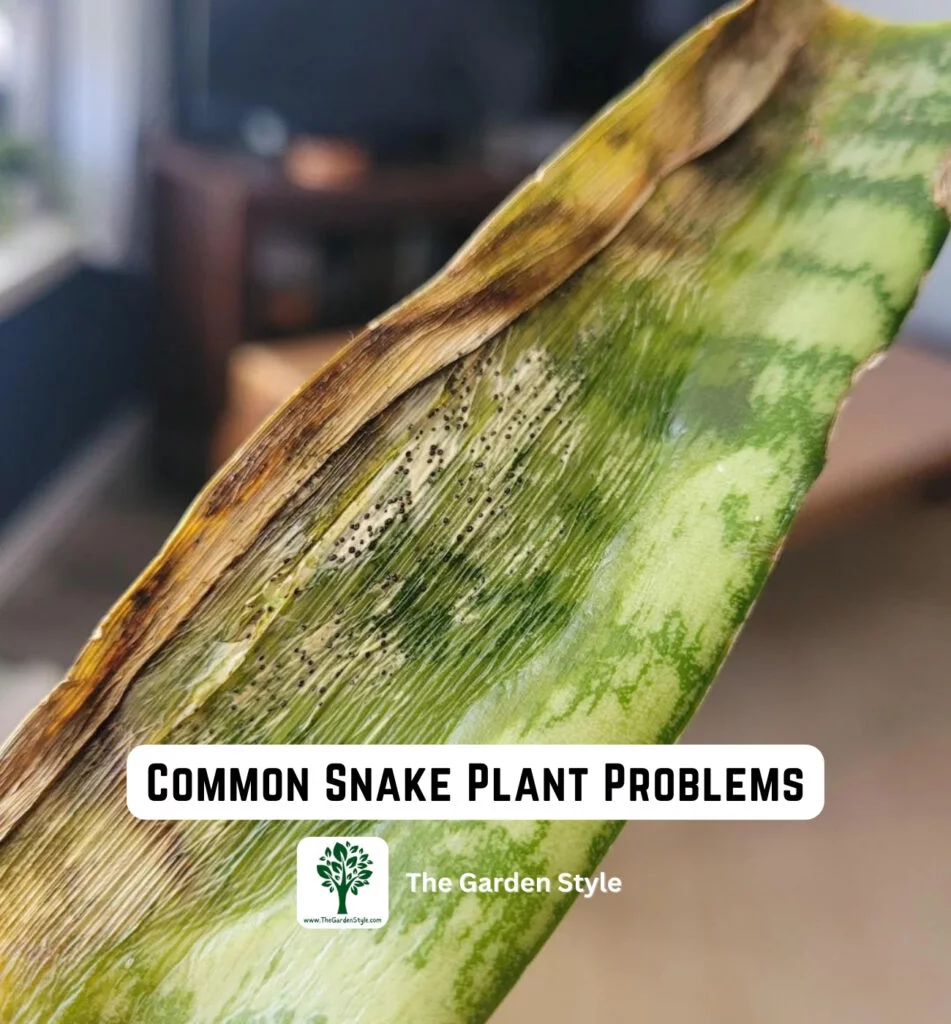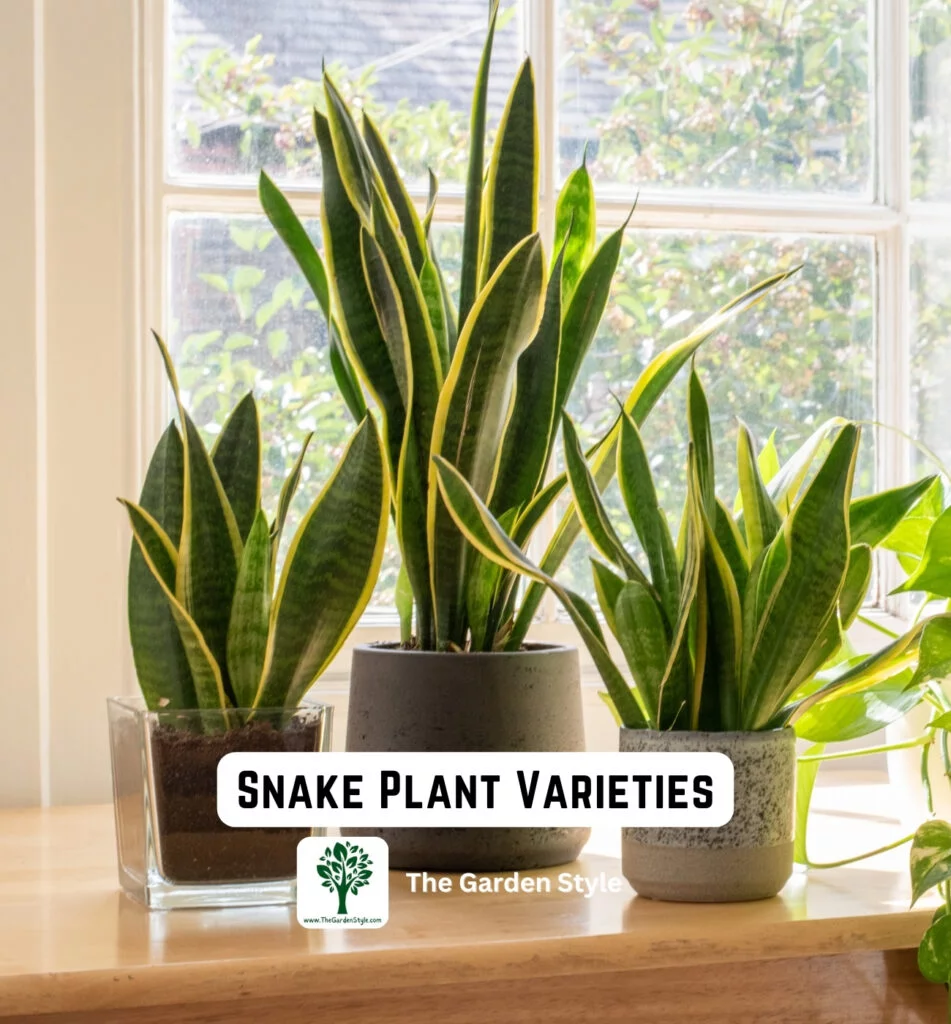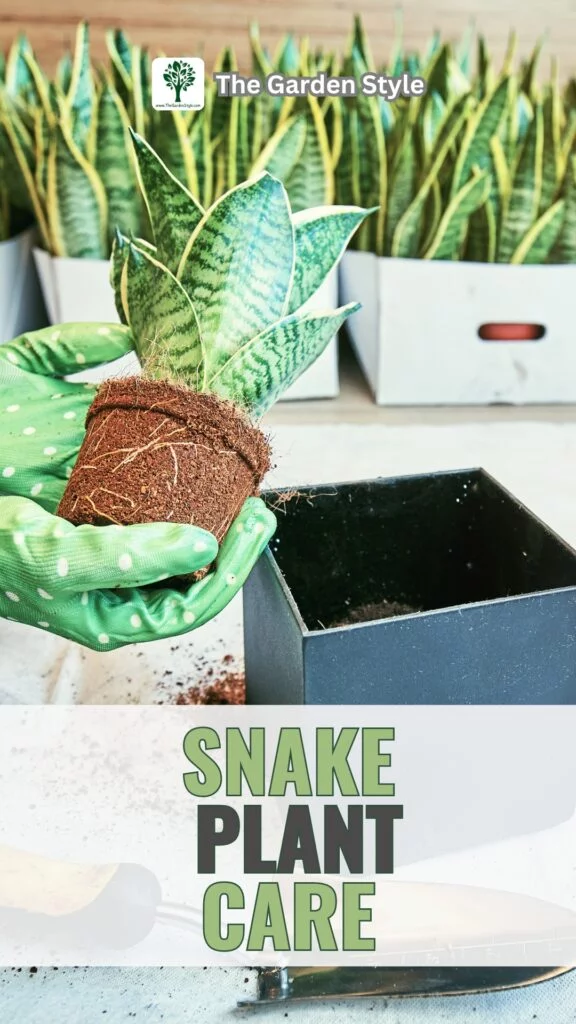If you’re searching for a true low-maintenance companion to spruce up your indoor spaces, look no further than the snake plant. This hardy houseplant, also affectionately known as mother-in-law’s tongue or Sansevieria, is a gardener’s dream come true. With its striking upright leaves and architectural form, the snake plant not only adds a touch of natural beauty to your home but also works hard to purify the air by absorbing toxins. It’s the perfect plant for novice gardeners or anyone with a busy lifestyle who still wants to enjoy the benefits of greenery without fuss. Explore our comprehensive guide to snake plant care for expert tips on nurturing these resilient beauties to thrive in your space.
Table of Contents
What Is a Snake Plant?
The snake plant is a succulent native to West Africa that belongs to the Asparagaceae family. It gets its unique name from the slender, elongated leaves that resemble snakes rising from the soil. These plants are incredibly resilient and can thrive in a wide range of conditions, making them a popular choice for indoor gardening.
Benefits of owning a snake plant:
- Purifies indoor air by removing toxins like formaldehyde and benzene
- Requires minimal care and maintenance
- Tolerates low light conditions and occasional neglect
- Adds a touch of greenery and natural beauty to any space
Check out the NASA article on indoor air pollution to learn how plants, like snake plants, can improve air quality in your home.
How to Care for a Snake Plant

When it comes to snake plant care, these resilient beauties are about as low-maintenance as houseplants get. But that doesn’t mean they’re completely fuss-free. To keep your snake plant looking its best and purifying your indoor air, you need to follow a few key care tips. From nailing the perfect soil mix to understanding their unique water needs, this comprehensive guide will walk you through everything you need to know about snake plant care. Get ready to master the art of keeping these striking succulents happy and healthy for years to come.
Temperature and Humidity Needs
Snake plants are incredibly adaptable and can tolerate a wide range of temperatures, from cool to hot. However, they prefer temperatures between 60°F and 90°F (15°C to 32°C). Avoid exposing them to extreme cold or heat, as this can stress the plant and cause leaf damage.
When it comes to humidity, snake plants are quite forgiving. They can handle lower humidity levels better than most houseplants, but they’ll thrive best in environments with moderate humidity levels between 40% and 50%.
Snake Plant Soil Requirements
Snake plants prefer well-draining soil that doesn’t stay too wet for too long. A potting mix specifically designed for snake plant is an excellent choice, as it contains a high percentage of inorganic materials like perlite or sand to improve drainage.
Here’s a simple DIY potting mix recipe for snake plants:
- 2 parts potting soil
- 1 part perlite or coarse sand
- 1 part compost or aged manure
Mix these ingredients thoroughly, and you’ll have a perfect growing medium for your snake plant. Learn more about the best soil for a snake plant.
- 🌳 SUPPORT YOUR SNAKE PLANT’S GROWTH – Give your indoor flowering plants the nourishing environment it needs to thrive! This premixed, ready to use soil blend is made up of premium non-organic all-purpose soil.
Snake Plant Light Requirements
One of the snake plant’s most attractive features is its ability to thrive in low-light conditions. However, this doesn’t mean it can survive in complete darkness. The ideal lighting for snake plants is bright, indirect sunlight.
If you notice your plant’s leaves starting to droop or lose their vibrant green color, it may be a sign that it’s not getting enough light. In this case, move it to a brighter location or supplement it with artificial grow lights. Learn more about the best grow lights for indoor plants.
Conversely, too much direct sunlight can scorch the leaves, causing them to turn brown or yellow. If you live in a mainly sunny area, consider placing your snake plant a few feet away from the window or use sheer curtains to filter the light.
How Often to Water a Snake Plant
One of the biggest mistakes people make with snake plants is overwatering. These succulents are drought-tolerant and prefer their soil to dry out slightly between waterings.
Here’s a general watering routine to follow:
- Water thoroughly until the excess moisture drains from the bottom of the pot.
- Allow the top few inches of soil to dry out before watering again.
- During the winter months, reduce watering frequency as growth slows down.
Signs that your snake plant needs water include wrinkled or curling leaves while overwatering can lead to yellowing leaves, root rot, and mushy stems. Learn more about how often to water a snake plant.
Fertilizing a Snake Plant
While snake plants are renowned for their low-maintenance nature, providing the proper nutrients is crucial, mainly when grown in containers. Unlike outdoor plants, which naturally replenish nutrients through the soil, potted plants, like snake plants, rely solely on you to provide the essential elements they need to thrive. Over time, pots lose their nutrients, and they don’t naturally replenish like plants growing in the ground. Without proper fertilization, your snake plant may struggle to maintain its vibrant green foliage and sturdy upright growth.
During the growing season, which typically spans spring and summer, you can give your snake plant a gentle nutrient boost by feeding it with a balanced, water-soluble fertilizer every 6 to 8 weeks. Look for a fertilizer specifically formulated for succulents or cacti with an N-P-K ratio of 3-1-2. This ratio provides the ideal balance of nitrogen, phosphorus, and potassium, promoting lush, vibrant growth without overwhelming the plant.
Once the cooler winter months roll around, it’s best to avoid fertilizing altogether. During this dormant period, your snake plant’s growth will naturally slow down, and adding unnecessary nutrients can do more harm than good.
- 🌱 PERFECT BLEND OF NUTRIENTS – Give your snake plants everything they need to grow up healthy! Our 3-1-2 liquid concentrate has all of the essential nutrients that your plants crave.
Common Snake Plant Problems

Despite their hardy nature, snake plants can occasionally face a few issues. Here are some common problems and how to address them:
Pest Infestations
Snake plants can sometimes fall victim to pests like mealybugs, spider mites, or scale insects. Signs of a pest infestation include sticky residue on the leaves, webbing, or small white, cottony masses.
To control pests naturally, start by isolating the affected plant and removing any visible insects with a cotton swab dipped in rubbing alcohol. To get rid of stubborn infestations, you can also try neem oil, insecticidal soap, or horticultural oils. Learn more about how to mix neem oil for plants.
Yellowing or Browning Leaves

Yellowing or browning leaves can result from various factors, including overwatering, underwatering, excessive direct sunlight, or nutrient deficiencies.
Start by checking your watering routine and adjusting as needed. If the issue persists, move the plant to a location with more suitable lighting conditions. If the problem is widespread, consider repotting the plant with fresh, well-draining soil and a balanced fertilizer.
Recommended reading: Snake Plant Leaves Turning Yellow: Causes and Solutions
Root Rot
Root rot is a severe issue that can kill your snake plant if left unchecked. It’s typically caused by overwatering or poor drainage, leading to soggy soil conditions that promote the growth of harmful fungi.
Preventing root rot:
- Use a well-draining potting mix
- Ensure the pot has adequate drainage holes
- Allow the soil to dry out between waterings
Treating root rot:
- Remove the plant from its pot and inspect the roots
- Trim away any mushy, discolored roots with sterile pruners
- Repot the plant in fresh, well-draining soil
- Avoid watering until new growth appears
How to Propagate a Snake Plant

Snake plants are incredibly easy to propagate, allowing you to multiply your collection or share with friends and family. Follow these simple steps for successful propagation:
Division Method:
- Unpot the mother plant and gently brush off any excess soil from the rootball.
- Carefully divide the rootball into sections, ensuring each section has both roots and leaves attached.
- Repot each division into its well-draining container filled with a succulent/cactus potting mix.
- Water sparingly until new growth appears, then resume regular care.
Leaf Cuttings:
- Select a healthy, mature leaf and use a clean, sharp blade to cut it into sections, leaving 2-3 inches of stem on each piece.
- Allow the cut ends to callus over for 2-3 days before propagating.
- For soil propagation: Insert the cuttings into a well-draining potting mix, ensuring the leaf tips are exposed.
- For water propagation: Place the cuttings in a glass or jar filled with fresh water, ensuring the leaf tips remain above the water line. Change water weekly.
- Once roots have developed, transplant the rooted cuttings into their pots with well-draining soil.
Recommended reading: Propagate a Snake Plant in Water: A Step-by-Step Guide
Rhizome Propagation:
- Carefully remove the mother plant from its pot, brushing away any excess soil.
- Gently detach any offshoots (rhizomes) growing from the base with roots attached.
- Pot each offshoot into its container with fresh potting mix.
- Water sparingly until new growth appears.
No matter which propagation method you choose, ensure proper soil drainage and be patient – snake plants can be slow to establish roots initially.
Check out our informative video on snake plant propagation in water to learn a simple and effective method for expanding your plant collection effortlessly.
How to Repot a Snake Plant

When your snake plant has outgrown its current home, it’s time for a repotting refresh. Follow these simple steps to give your plant a spacious new abode:
Materials Needed:
Steps:
- Prepare the New Pot: Fill the new pot about ⅓ full with your potting mix. Gently pack down the soil.
- Unpot the Plant: Carefully remove the snake plant from its current pot. Massage the rootball to loosen any compacted soil. If severely rootbound, use a chopstick or blunt utensil to tease apart the roots gently.
- Check the Roots: Inspect the roots for any rot or damage, trimming off affected areas with clean pruners.
- Position the Plant: Place the root system into the prepared new pot, ensuring the plant is sitting at the same soil level as before.
- Backfill with Soil: Scoop the fresh potting mix around the rootball, gently pressing down to remove air pockets. Leave 1 inch of space from the soil line to the pot’s rim.
- Water Thoroughly: Give your newly potted snake plant a deep watering, allowing excess moisture to drain completely.
- Find the Perfect Spot: Position your repotted plant in a spot with bright, indirect light.
- Go Easy on Watering: For the first few weeks, water sparingly to allow the roots to settle into their new home.
And that’s it! With its refreshed living quarters, your snake plant will be reinvigorated and ready to thrive. Just be sure to repot every 2-3 years to accommodate its growth.
Recommended reading: Choosing the Best Pot for Your Snake Plant: Outdoor and Indoor
- Indoor & Outdoor Use:A simple modern aesthetic and clean matte finish planters indoor plants will perfectly match any home or office décor. it can bear extreme temperature environment and is suitable for indoor and outdoor . With better breathabiity and water absorption, it’s beneficial to the healthy growth of plants.
Snake Plant Varieties

While the classic snake plant with its tall, striped leaves is a familiar sight, this diverse genus actually encompasses over 70 different varieties. From dwarfs to giants, solids to variegated patterns, there’s a snake plant to suit every taste and space. Let’s explore some of the most popular cultivars:
- Sansevieria trifasciata ‘Laurentii’: One of the most striking varieties, ‘Laurentii’ features thick, fleshy leaves with deep green centers and bold yellow margins. Its vibrant colors make it an eye-catching accent plant.
- Sansevieria cylindrica: Also known as the Cylindrical Snake Plant, this unique variety boasts tightly clustered, round, finger-like leaves. Its unusual sculptural form adds architectural interest.
- Sansevieria hahnii: The Bird’s Nest Snake Plant is an adorable dwarf variety with tightly rosette-forming leaves that maintain a compact, crested shape as they mature.
- Sansevieria masoniana: With its broad, thick, paddle-shaped leaves, the Whale Fin Snake Plant makes a bold statement. It’s a larger grower that can reach up to 6 feet tall.
- Sansevieria parva: On the petite side, the Dwarf Snake Plant only grows 6-12 inches tall, making it ideal for smaller spaces like desks or bookshelves.
- Sansevieria zeylanica: The Ceylon Bowstring Hemp features attractively mottled, green-and-silver leaves that make it a lovely accent against plainer backgrounds.
From compact varieties ideal for apartments to towering specimens fit for a living sculpture, there’s a snake plant to complement every style and setting. With their low-maintenance care and air-purifying abilities, these resilient plants are a versatile and rewarding choice for any indoor garden.
Recommended reading: Types of Sansevieria Plants (Snake Plant Varieties)
Final Conclusions
The snake plant is a true gem in the world of houseplants, offering both beauty and practicality. With their striking architectural form and easy-care nature, these resilient succulents can thrive in a variety of indoor environments. By following the care tips outlined in this guide, you’ll be rewarded with a lush, healthy snake plant that purifies the air and adds a touch of nature to your living space for years to come.
Frequently Asked Questions
Snake plants prefer to be rootbound, so they only need repotting every 2-3 years. Choose a pot just 1-2 inches wider than the current one.
Yes, snake plants contain saponins, which can be mildly toxic to pets if ingested. Keep them out of reach of curious pets or children.
Yes, NASA studies have shown that snake plants are effective at removing toxins like formaldehyde, xylene, and benzene from indoor environments.
Depending on the variety, snake plants can grow anywhere from 6 inches to 8 feet tall, with most common houseplant varieties reaching 2-4 feet.
If this post about Snake plant care was helpful, please share it:





